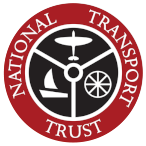Sailing through the Ages
Archaeologists tell us that man has used water for transportation since prehistoric times. The Celts used wooden sailing boats with trading routes that stretched around the coasts and across the channel. Without their fleets the Roman invasions of Britain by Julius Caesar in 55 BC and more permanently by Claudius in 43 AD would have been impossible. The site of London corresponds to the lowest bridgeable crossing of the River Thames and the limit of navigation from the North Sea.
Vikings sailed across the North Sea to Britain in longships, while the Norman invasion and conquest of Britain involved a beach landing at Pevensey. The Norman empire traded by sea as far as Egypt and the Crimea, and Richard I sailed with his army to join the third crusade in the Holy Land. The Spanish Armada attempted to facilitate an amphibious army landing from Flanders in 1588. Meanwhile Drake, Frobisher and others were crossing the Atlantic and exploring the New World. The key vessels at this time were galleons: three-masted cargo ships that also carried armaments and were to some extent licensed pirates.
A series of European Wars led to development of the naval warship in a distinct direction from the merchantman. England was humiliated in 1667 when a Dutch squadron sailed into the Medway and captured the English flagship, HMS Royal Charles. Fortunately Chatham Dockyard escaped the raid, going on to build notable vessels such as HMS Victory and Temeraire with multiple gun decks allowing the broadside to become the dominant battle tactic.
Inland Navigation
Meanwhile progress was being made in the improvement of rivers to facilitate inland navigation. Weirs were constructed to sustain water levels in upper reaches with flash locks allowing boats to pass. More thorough construction involving by-pass channels and locks emerged in the 1600s on the River Wey Navigation and the Exeter Canal. The first completely artificial canal was sponsored by the Duke of Bridgewater to take coal from his Worsley mine to market in Manchester.
Between 1790 and 1820 a period of "canal mania" led to the construction of miles of waterway, each setting its own standards of lock (and hence boat) dimensions. James Brindley laid out the Trent and Mersey as part of his scheme for a "grand cross" of canals facilitating transport between the Humber, Mersey, Severn and Thames estuaries. In reaction to increasing congestion and the roundabout nature of some of Brindley's efforts Thomas Telford engineered the Midland Mainline with some substantial earthworks.
Colliers and Clippers
Coastal traffic thrived with the industrial revolution and a rising demand for coal. James Cook cut his teeth on a collier from Whitby before setting sail on his voyages of discovery. Marc Brunel worked in the naval yard at Portsmouth and his son Isambard set his sights on the Atlantic, developing ships including SS Great Britain, in its time the largest in the world.
Sailing ships ruled the long-distance trading routes well into the nineteenth century, most famously with the elegant clippers competing to carry seasonal export cargoes from Asia and Australia in record times "round the Horn". One ship from this era remains, Cutty Sark now landlocked in Greenwich.
Docks and Shipbuilding
The volumes of goods being imported and exported demanded something more sophisticated than over-the-side loading at open wharves and in mid-channel. Enclosed dock areas with gates to control water levels were built alongside rivers, most notably at London and Liverpool, and by diverting the natural watercourse at Bristol and Ipswich. Massive timber trestles were built as coal staithes in the NE to allow vessels to be loaded by gravity feed from railway trucks.
While every port had some facility for ship repair, newbuilding became the specialism of yards on Tyne and Wear, Clyde and Belfast. Virtually all of this has disappeared with competition from the far east.
Pleasure Steamers and Ocean Liners
The age of steamboats began in the 1820s when reliable powered craft began to attract Victorian commuters and trippers. For a decade or two the paddle steamer was the way to travel, up and down the Clyde and Thames as well as cross-channel, until railways came to offer a more practical alternative.
In the 20th century as propellors superceded paddle wheels and the steam turbine displaced piston engines, the age of the great ocean liners developed. Two Britsh companies, Cunard and White Star, competed with flag carriers from USA, France and Germany to build the biggest, fastest and most luxurious way of crossing the Atlantic. At this time Southampton developed as the pre-eminent passenger port, although many emigrants took their last view of Britain from ships leaving Liverpool.
Container Ships, Supertankers and Cruise Ships
Since WW2 ships have continued to get larger. The major revolution was the containerisation of general cargoes from the 1960s, eliminating the need for manual handling, and ports have consequently migrated closer to deep water at Felixstowe and London Gateway. Other vessels have become more specialised as bulk carriers, oil tankers and car carriers form the majority of shipping using Britain's ports.
The UK shipbuilding industry has dwindled, the last noteworthy civilian ships being P&O's Canberra built in Belfast for the UK-Australia run and Cunard's Queen Elizabeth 2 built on Clydeside for the Transatlantic and cruising markets. Britain does still have a significant skills base in Barrow building submarines.
.
![]()
Would you like to read more?
Then join us - much more information is published in our Digest and Members' Area.
Click become a Member for details of Trust membership.
